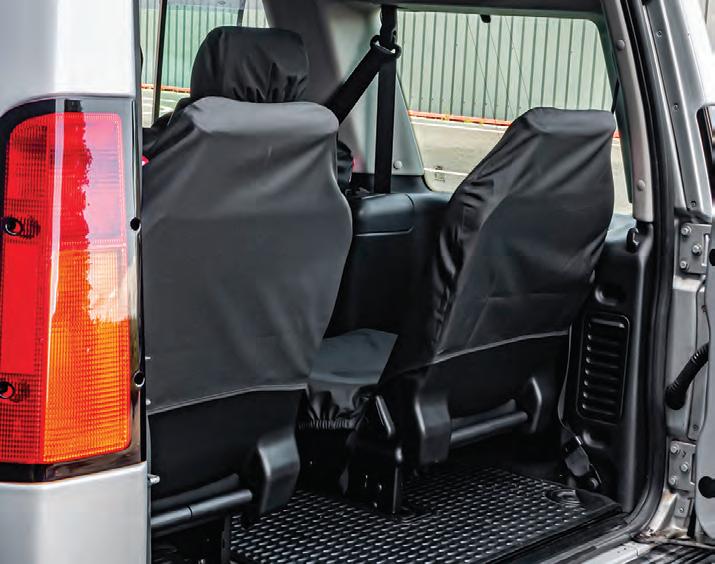



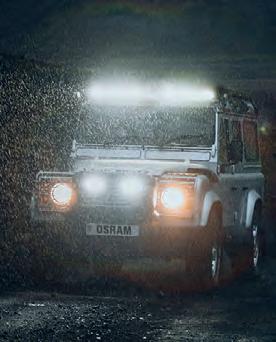


Light is Adventure. Let OSRAM light the way on your next adventure! Light is Adventure. Let OSRAM light the on next


















www.allmakes4x4.com

To advertise in The Landy, call our team on 01283 742969

We’re on Facebook: www.facebook.com/thelandyuk








Light is Adventure. Let OSRAM light the way on your next adventure! Light is Adventure. Let OSRAM light the on next


















www.allmakes4x4.com

To advertise in The Landy, call our team on 01283 742969

We’re on Facebook: www.facebook.com/thelandyuk

THREE AND A HALF DECADES OF THE LAND ROVER DISCOVERY.
Feeling old yet? That’s three and a half decades, five generations, a sprinkling of 4x4 of the Year awards and heaven only knows how many limited editions. It’s heaven only knows how many plus one now, anyway. Because how does Land Rover like to celebrate an anniversary? Why, with a special edition, of course!
And not only is there a special edition on the cards. It’s going to premiere a new engine, too.
This is the D350, a six-pot mild hybrid diesel with 350bhp and 516lbf.ft. The most powerful engine used in the Disco so far, it displaces 3.0 litres and launches the vehicle from 0-60 in 5.9 seconds while returning a best-case WLTP figure of 34.0mpg.
What else about the Discovery 35th Edition is going to make it stand out from the rest of the range? It’s based on the Metropolitan model (or ‘inspired by,’ to use Land Rover’s words) and features 22” black alloys, a sliding pan roof, four-zone climate, a cooled cubby
box, head-up display, massage seats and the Cold Climate and Towing packs among the highlights.
The 35th Edition is available in Santorini Black or Carpathian Grey, which sounds like it’s flirting with ‘any colour you want’ territory. It’s available in ‘strictly limited numbers,’ as you’d think buyers would be too with £79,990 on the ticket – however it does actually add a good bit of kit for what’s only £1970 more than the already very well equipped Metropolitan.
It’s no secret that Discovery sales have taken a big hit from the Defender, nor that the philosophy of the current fifth-generation model is set to be reworked from scratch with the arrival of an all-new Discovery 6 in 2025. There’s sure to be a long list of yet more special editions in the run up to that as JLR tries to keep its stock moving – so if the 35th Edition doesn’t float your boat, all you need to do is wait.
• You might have caught the Discovery’s 35th anniversary celebrations while you’ve been out and about this

summer. To mark the occasion, Land Rover converted one into an ice cream van, serving ‘a selection of luxury ice cream flavours and toppings’ from the vehicle’s loadspace, and another to a hydration station for dogs. The latter is equipped using the official Discovery Pet Pack accessory range, which includes a foldable pet carrier, portable rinse system, spill-resistant water bowl, quilted loadspace liner, rubber boot liner and pet-access ramp.
So, where might you have seen these unique Discos demonstrating the wonders of Land Rovers’ versatility to the world this summer? Er, at an exclusive luxury resort in Hertfordshire. From mid-July to early September, Land Rover stationed them at Everyman In The Garden, a series of cinema screenings in the grounds of the £500-a-night Grove Hotel where Land Rover also put on (‘curated’, sorry – people who work for Land Rover don’t fart now, they curate some gas) a selection of experiences including al-fresco dining, tree climbing, hot-air balloon rides and off-road driving.
Elsewhere, the Discovery brand is also now partnering with the Watergate Bay Hotel in Cornwall (just the £300 a night this time) to offer complimentary Beach School sessions where guests’ kids can learn about firepit cookery and bushcraft as well as imagination and storytelling. ‘These forest school inspired beach pop-up sessions build confidence, promote conservation efforts and build survival skills,’ explains Land Rover, which is also offering use of a Discovery Sport PHEV for guests staying in the hotel’s Beach Loft apartments (£750-£1000 a night) to explore the local area.





“Tea for me, four sugars and enough milk so it’s the colour of He-Man.”












JLR RECENTLY RECRUITED ITS 1500TH EX-FORCES MEMBER OF STAFF. Ten years on from signing the Armed Forces Covenant, the company has since then been running a dedicated armed forces employment support programme – as well as partnering with Mission Motorsport, the Forces’ Motorsport Charity.
As well as supporting its own role as an employer, JLR engages with armed forces veterans to help them make the most of their experience and transferable skills elsewhere in the world of work. It has its own Armed Forces Engagement Manager, running an Armed Forces Community support network and provides CV and interview advice – as well as actively encouraging other
companies to understand what veterans can offer.
That Armed Forces Engagement Manager is Stephen Lees. ‘As well as technical skills many service leavers and veterans have,’ he says, ‘we also recognise the exceptional project management, leadership and organisational qualities and unique experience military candidates bring. JLR provides a sense of belonging that individuals have held so dear throughout their military service, in shared common values and ethos through JLR’s company purpose.’
Among the ex-soldiers now working for JLR is Pete Whittenbury, who served in the Royal Electrical and Mechanical Engineers (REME) from 1988 to 2012. He continues to serve as an Army












JLR HAS ANNOUNCED THAT THE NEW RANGE ROVER ELECTRIC WILL BE ITS FIRST VEHICLE FITTED FROM NEW WITH TYRES MADE FROM FSC-CERTIFIED NATURAL RUBBER. Made by Pirelli, these will then be rolled out across the rest of the Land Rover range ‘at scale’ as the
company brings another field of car making in line with its Reimagine strategy of responsible sourcing and supply chain traceability.
The complex Forest Stewardship Council (FSC) operates a complex certification process which verifies that certified material has been identified and separated out during its passage along the supply chain. JLR says it is ‘fully committed to responsible sourcing, including working to ensure natural rubber used in its tyre production is traceable across every processing stage through to origin.’
This new commitment will see JLR using more than a quarter of a

reservist, as well as being a Lead Engineer responsible for environment test management on power train projects and, most recently, the new Range Rover Electric. Armed forces veterans can be found throughout the company – from the shop floor in its various manufacturing and engineering sites all the way up to the boardroom.
million FSC-certified tyres each year. In addition, it’s working alongside Pirelli to increase the percentage of sustainable and recycled content in all the tyres the company supplies for use on new Land Rovers.
‘JLR’s decision to adopt tyres made with FSC-certified natural rubber is a ground-breaking move that sets a new benchmark for sustainability in the automotive industry,’ says FSC International’s Fabian Farkas. ‘This initiative not only boosts the demand for responsibly sourced natural rubber, it also positively impacts the environment and the smallholder communities involved in its production.’

















TFreelander is coming back. It will be all-electric, and it will be built in China, but JLR has confirmed that while it will initially be available only in its domestic market, it is ‘destined over time for global export.’
The Freelander name will be used under licence by Chery, with which JLR has a long-running joint venture partnership. Having worked together for the last 12 years, the two companies recently signed a joint letter of intent to ‘strengthen CJLR’s product offer for the next era of electrification in China.’
This will see Freelander become a family name for ‘an advanced portfolio of electric vehicles based on Chery’s EV architecture.’ In time, it’s likely to become a fourth model range in the
‘house of brands’ that replaced the Land Rover name in last year’s business reorganisation.
JLR says the new model of collaboration will make the most of both companies’ strengths, with Chery holding a leading automotive market position in China while Land Rover’s heritage is backed up by its leadership in the field of design.
‘Freelander will offer a range of mainstream electric vehicles, initially sold in China through a distinct network but over time destined for global export,’ explains JLR. ‘The vehicles will be designed in collaboration with both Chery and JLR to create a new positioning in the rapidly growing China mainstream New Energy Vehicle (NEV) market. The


products will be built at CJLR’s existing manufacturing facility in Changshu.’
The Freelander will be independent from both Chery’s existing portfolio and JLR’s house of brands. ‘The blend of
Chery’s advanced EV technology with the distinctive appeal of the Freelander brand will undoubtedly provide China and global consumers with a unique electric vehicle experience,’ said Chery







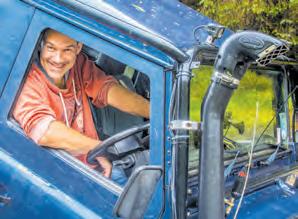
We have our threescore years and ten on this earth, to quote the Bible. And the Discovery has now been around for half of them, which is enough to make me feel very old indeed
During that time, the Discovery has changed a lot and so have I. Mainly, we’ve gone in opposite directions. It’s faster, more agile, more modern… I’m none of these things. It’s bigger, though, and heavier, and with that I can certainly empathise. But it’s still got that same old willingness to get its hands dirty, even if you’re not as likely to see it in the middle of a mosh pit these days. Er, yeah.
So when I started out writing about 4x4s, it was 1993 and a new Discovery cost about £18k or something. Now here we are hoping for an invite to the 35th anniversary celebrations and it turns out that they take the shape of a special edition model, and to get hold of a ticket you’re going to need £79,900.
Anyway. Next year, the Discovery will embark on the second half of its three score years and ten and it will do so with an all-new model. Given the hammering the current one has taken from the Defender, safe to say the Discovery 6 is going to be a lot different.
There’s been talk that it’ll be electric and nothing else. Sooner or later, Land Rover is going to have to take that leap, and you could argue that it has nothing to lose with the Disco. I doubt it’ll be quite as bold as that, however.
Obviously, the new Disco will ramp up the luxury still further. It will be a family vehicle for families on six-figure money. I think it’s likely to be what the Velar is in the Range Rover line-up – slick, classy, hard to understand what it’s there for.
Thing is, the Defender is now the family vehicle in the Land Rover range. It carried on where the Discovery 4 left off. I guess there must be a big enough luxury gap between it and the Range Rover… but as far as I’m concerned, what they should do with the Discovery is turn it back into the utility wagon it once was.The Defender replaced it as Land Rover’s fashion statement: what better way for a traditional practicality monster to find itself a new groove?
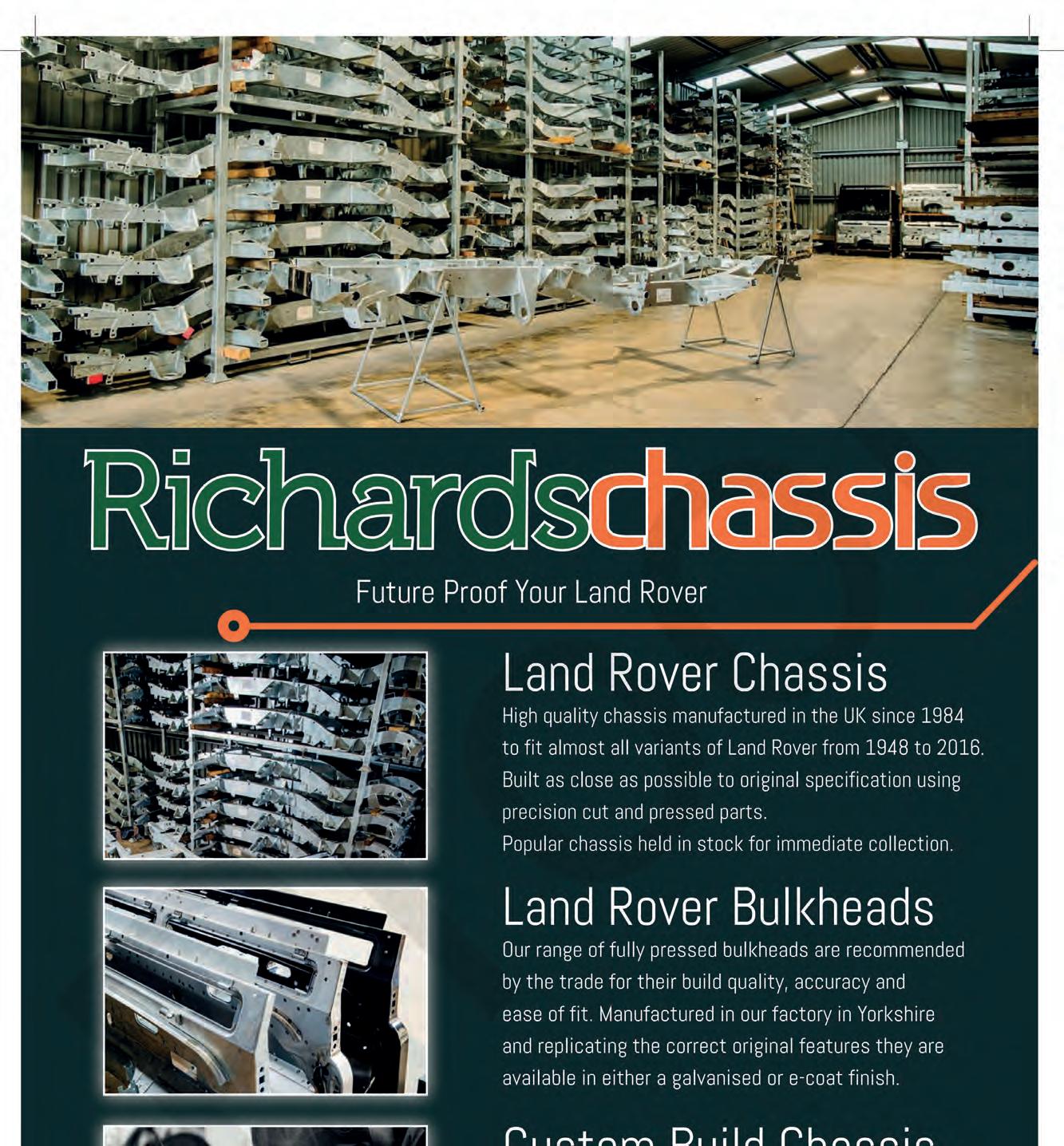
Alan Kidd, Group Editor alan.kidd@assignment-media.co.uk



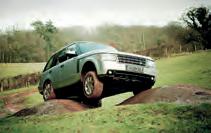
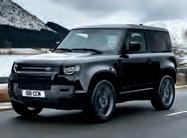


IF YOU’RE INTO LAND ROVERS AND YOU’RE ORGANISING THE BIGGEST DAY OF YOUR LIFE, the moment the subject of wedding cars comes up it’s fairly obvious what kind you’re going to think of. And it’s not a horse-drawn carriage with a hundred white doves waiting to be released from a box in the back of it.
That’s exactly what Jay Davies was thinking when his wedding was coming up in 2022. ‘We found that there was nothing really out there,’ he explains, ‘especially where we are in the Cotswold area.’

Being a resourceful sort, and not the kind of person to pass up an opportunity, Jay decided to do something about it. Nearby, he found a farmer with an old 2.5 diesel 90 from 1986 which had been sat unused for a while and soon a deal was done.













‘It needed quite a bit of mechanical attention,’ says Jay. ‘So I spent the first six months of ownership finding and fixing a number of issues. It also took about six months to get rid of all the hay, sheep’s wool, dog hair and mouse nests!’
Having got the 90 to the point where it was viable to use as a running vehicle, Jay was able to start stripping it down and rebuilt it for its new purpose as a wedding car. He did all the work himself – including stripping the paint, filling the body, spraying, welding and even building a custom oak parquet floor in the rear tub. A man of many talents.
As befits a wedding car, the refreshed 90 was given an Old


English White finish. ‘We chose the colour and tan leather interior to be as aesthetic and fitting as possible for weddings,’ he explains. ‘We also chose to go with a sand canvas roof that gives us flexibility in the summer and winter to have the top off – as long as it’s dry!’
The Land Rover is seen here with black steel eight-spokes, however Jay offers a range of options which customers can choose from when making a booking – including body-
colour wheels. ‘We can have the roof on or off, and fully dressed up with flowers all over. Even down to letting our couples choose a ribbon colour, the experience is fully bespoke.’ However you dress it up, the 90 comes complete with a chauffeur. It could be the answer to a question we’ve been asked several times over the years – if you’re asking it too, look for the_wedding_landy on Instagram or email Jay on contact@ theweddinglandy.co.uk.
LAND ROVERS HAVE BEEN FITTED WITH MERIDIAN AUDIO SYSTEMS SINCE 2010. And in a new move, they’re still going to be fitted with them. Actually, that IS a new move, sort of. Meridian has been building systems for Land Rovers with engines; going forward, an extended contract will see it doing the same for the company’s electric vehicles. It will also allow the company to get involved in the cabin design process at an earlier stage. JLR and Meridian
already work closely together to help ensure the vehicles’ cabins are audio-friendly (the current Range Rover, for example, is available with a 1600W system featuring no less than 35 speakers). And it’s not just about music. Meridian’s latest noise cancelling technology monitors wheel vibrations, tyre noise and engine sounds transmitted into the cabin and generates a cancelling signal, played through the system’s speakers, to help achieve an atmosphere of calming refinement.
And if calming refinement is the opposite of what you want to achieve, Meridian is also behind the Tailgate Event Suite that’s another option on the Range Rover. This adds yet another bank of four speakers ‘to work perfectly when socialising with the tailgate deployed.’ So, the world’s most expensive ghetto blaster, then. Ideal for when you’re attending polo at the Guards Club and want to share your recently discovered enthusiasm for Steel Pole Bath Tub and Lubricated Goat.

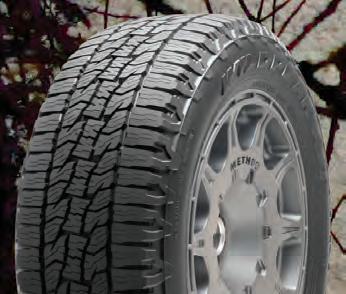



WILDPEAK A/T TRAIL


WILDPEAK R/T01
Wildpeak A/T Trail - Rugged Crossover Capability
Built for adventure delivering rugged off-road capability without compromise on the open road. Featuring the Three-Peak mountain snowflake, the Wildpeak A/T Trail encourages adventure seeking crossover owners to discover true all-weather capability.
Wildpeak R/T01 - Bold, Rugged Terrain Capability
Developed for 4x4’s and SUV’s this tyre sets the standard for the new rugged terrain tyre category. Providing the tenacious off-road traction of a mud tyre while retaining the tread life and stability of an all-terrain, professional Off-Road tyre with POR marking. For further information and to find your local stockist please visit www.falkentyre.com/en or www.4site4x4tyres.co.uk







When it’s
the tent contains a
x 1400mm
area with five zippered windows and a 50mm highdensity foam mattress. It’s made using 300gsm polycotton ripstop canvas and 420D Oxford polyester fly, and it’s total weight is around 56kg.
Inside, the tent features a 300 lumen LED touch lamp. You also get two 2.1 amp USB charging points, which connect to a 12-volt outlet within your vehicle.




































































































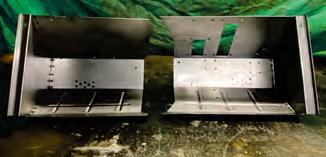

Price: £139.26
Available from: maltings4x4store.co.uk, MA497
IT WON’T BE LONG BEFORE MOST OF THE DISCOVERY 2S that haven’t already rusted themselves to death will be sitting on bigger tyres and taller suspension. Not that people haven’t already been lifting them for years (decades, actually) – during which time, it’s become clear that a consequence of doing so is to shorten the life expectancy of the Watt’s linkage on the back axle.
Named after its inventor, none other than James Watt himself, this is
made up of two half-width lateral rods attached to the top and bottom of a vertical bar with a central pivot point on the axle. They do continue to work when the vehicle is lifted and equipped for greater travel, however they bind more quickly – restricting the axle’s movement and ultimately shortening their lifespan.
Terrafirma’s Long-Travel Watts Link Arms are the answer. Supplied with polyurethene bushes already installed, these allow the link to move freely,
allowing greater articulation and reducing the potential for damage. Supplied in a pair, they’re suitable for all Disco 2’s from 1998 to the end of production in 2004.

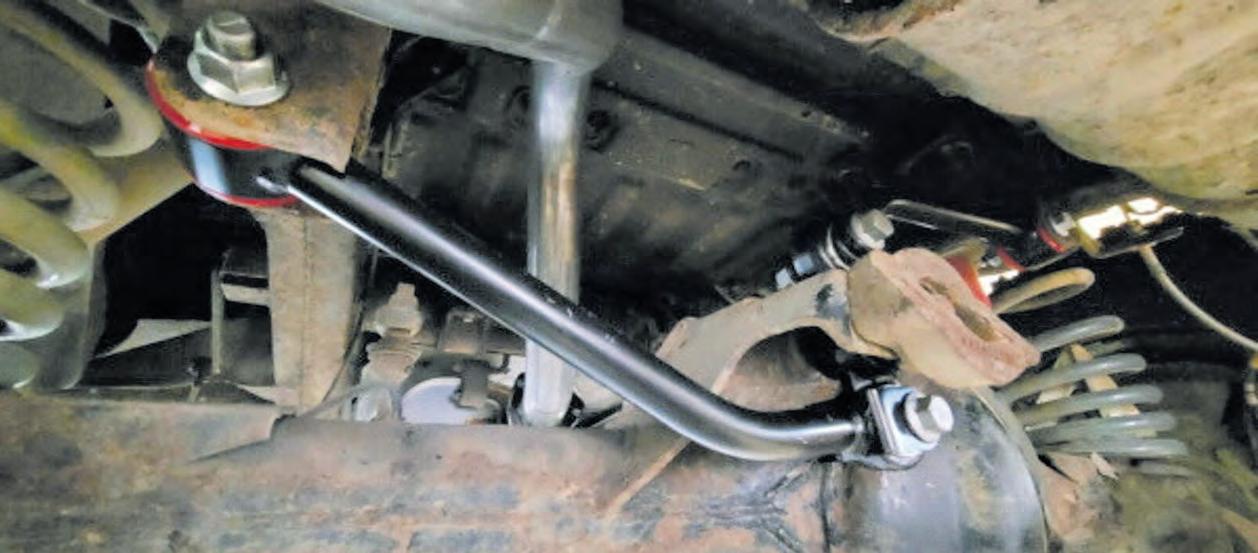






+2” lift blocks. This is fine as far as it goes, but you end up with the rear shocks losing two inches of extension and gaining the same in (unusable) compression.
To address this, another handy bit of hardware from Terrafirma is this Rear Shock Absorber 2 Inch Drop Relocation Kit. It contains a pair of brackets which raise the lower mount by two inches to correspond to the lift on the vehicle, returning the rear shocks to their original extension/compression ratio.

As well as the brackets (which, be warned, are left and right handed, so do make sure you’re installing each one on the correct side of the vehicle), the kit comes with all the hardware you’ll need to fit it.
Price: £22.17
Available from: maltings4x4store.co.uk, TF3310HD
SOFT SHACKLES HAVE BEEN AROUND FOR A WHILE, but there’s still plenty of room for them to grow into in the UK market. They’re made from synthetic rope and offer the same advantages as winch lines of the same material – safer and easier to handle, much lighter in weight, won’t rip your skin off in very cold weather and they float. You can see why extreme off-road competitors like them, and even if you just carry a recovery kit for when things go wrong on the lanes it’s less weight in your truck and less hassle when you need to fetch one out. This 14mm soft shackle from Terrafirma is rated to 1000mm and 21 tonnes of load.



















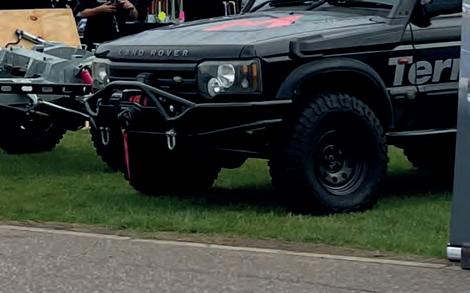




















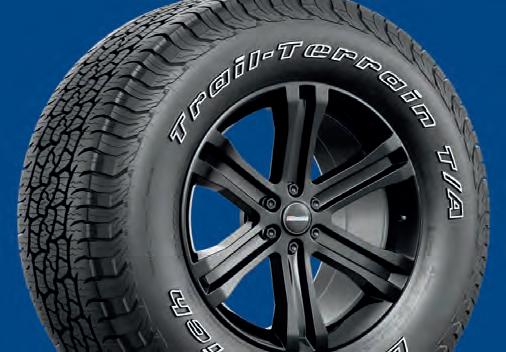




To advertise in The Landy, call our team on 01283 553244

We’re on Facebook: www.facebook.com/thelandyuk

Black Fox is a relatively new name in the Defender dress-up market. And with its urban warrior styling backed up by well known products and prices that can’t be ignored, it’s looking like a sly operator
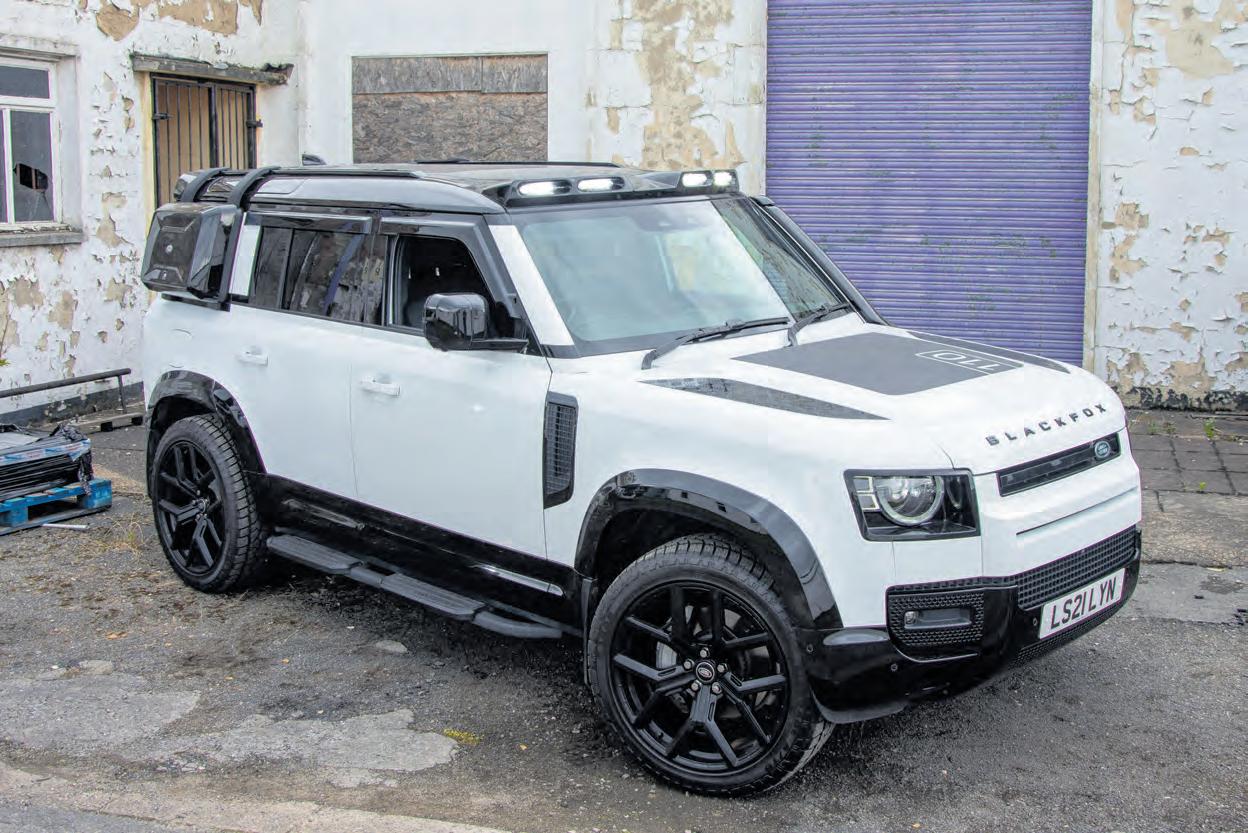
Afew years ago, around the time when JLR’s SVO division was created, we reported on a speech by Gerry McGovern in which he spoke about the aftermarket outfits who modify Land Rover’s vehicles –and how the company was going to put them all out of business.
It’s easy to be wise after the event, of course. But hey, Land Rover, how’s that working out for you?
In the case of the old-shape Defender, maybe they decided it would be best to forget it ever existed and throw all
their eggs into the basket of the new one. We can’t say how many options and accessory packs it was available with, because the numbers don’t go that high, but safe to say they went to great lengths to make sure their clients could dress up their Defenders pretty much any way they wanted.
And what did those clients do? They went off to companies like Urban instead. And lo, a whole new aftermarket was born.
It’s an aftermarket that doesn’t want winches, lift kits and so on. But it really

wants Defenders that look cool. It’s a kind of Defender owner who might never have heard the phrase ‘Chelsea tractor’ but would probably take it as a compliment.
It’s a long way from Chelsea to Hull, in every sense, but that’s where you’ll find Black Fox. The company is a relative newcomer to the vehicle modding game, however it has been around long enough to have cut its teeth on a variety of pick-up trucks before turning its attention to the new Defender. It’s done a few of them, one of which is the demonstrator in these pictures – which it’s currently putting out there on the show circuit as it strives to build recognition of its brand. Black Fox is in effect a retailer. It doesn’t make its own products, instead using third-party suppliers for the parts it fits to customers’ vehicles. In this way, it’s no different from its well established rivals – but the big difference is that it promises to do so at much lower prices. The 110 Expedition package, for instance, which is the basis of the
vehicle seen here, costs £7800, albeit with the side box, ladder and wheels and tyres on top of that.
Our first question, and it will be yours too, was whether they manage to be so much cheaper than the opposition by using cheaper parts. The name of a large country full of factories churning out knock-offs will come to mind, as will an almost as large website where people sell them.
The answer? No. That’s not how they do it. ‘We wouldn’t last five minutes,’ to quote Kevin Shortman, co-owner of the business alongside Colin Martin. Instead, it’s about not loading themselves up with unnecessary overheads – and not being greedy.
Having a sanguine understanding of their client base is a big part of it, too. Though this is a company with a national reach, they intend to focus their marketing efforts on the north of England – where, they reckon, people have a keener eye on value for money than on being able to boast about how much they’ve just splashed on their
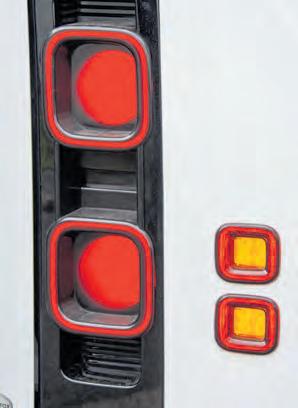

whip. Certain parts of Cheshire probably don’t count as being in the north for these purposes…
So what does your £7800 get you? The basis of what Black Fox does, according to Kevin, is make vehicles wider. So wide wheelarches play a pivotal role, and then Eibach spacers are used to help fill them. In the case of the demo vehicle, the standard wheels and tyres have been replaced by 285/45R22 Radar Renegade A/T5 all-terrains on 30mm offset rims, giving it the four-square stance of a proper urban warrior.
But then there are nods to traditional off-road functionality. The nearside A-post is home to a snorkel, while up top is a light pod containing a quartet of LEDs. The latter is a dummy, however the lights are very much functional – as is the pod itself, according to Kevin. This particular 110 doesn’t have a roof rack, he explains – but the Expedition package includes one, and the light pod does a good job of deflecting air over the top of it, preventing the



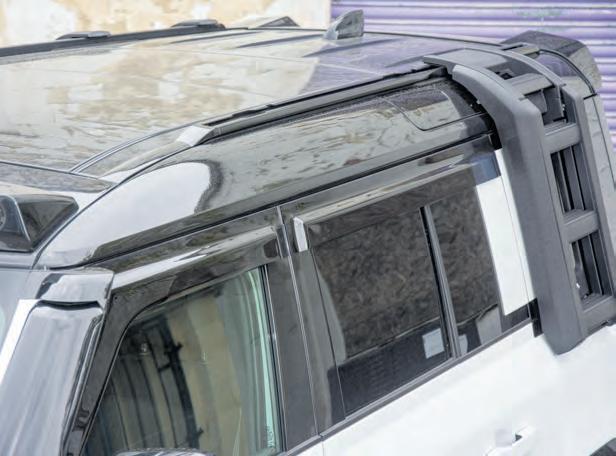
285/45R22 Radar Renegade all-terrains on 30mm offset rims give the Defender a tougher stance without making it look ridiculous – a tricky balance to strike, judging by some of the overdone efforts you see being created by companies whose customers seem to see taste and restraint as bad things. Land Rover itself could of course be included in that, depending on your point of view. While some accessories are all about the look, some are functional too; Black Fox’s window deflectors, for example, do a surprisingly effective job of reducing buffeting from the storage box and ladder mounted further back along the sides of the vehicle
buffeting and whistling you’d otherwise get at speed.
The kit includes wind deflectors for the front and rear windows, too, and these again help keep it quiet on the motorway. Not just when the windows are open, either. Back to the side box and ladder here – these will inevitably disturb the flow of air down the sides of the vehicle, but Kevin says the deflectors are remarkably efficient at minimising this.
Talking of air flow, further elements to the kit include an XL spoiler at the back of the roof. Add a set of side steps and mud flaps, plus a spare wheel cover, and you have yourself a package. There are other options too, including a protection kit which starts at £3050 for the 90, and in every case you can add bespoke elements to personalise the vehicle to your taste. On the latter score, Black Fox is developing ties to local wrapping and interior trim specialists, so if you want a bright liquid metallic pink Defender with matching denim seats you know who to talk to.
Selling that again afterwards would be fun, but an advantage of what Black Fox does is that all its modifications are reversible. It’s clip-on, clamp-on and stick-on stuff, all of which can be removed at a later date if you want to take the vehicle right back to factory standard – and where replacement parts are used, customers are given the originals for that very purpose. As you’d expect, of course, but it doesn’t always happen.
What does always happen is that the parts are fitted in-house. We said above that Black Fox is in effect a retailer, but it’s an added-value one which, rather than shifting boxes, works to a low-volume ethos by fitting the parts it supplies in order to ‘transform your vehicle into a unique masterpiece that reflects your vision and style.’ Flogging kit to punters
who’ll fit it themselves is one way to turn a profit, but doing a full-service job and only turning out finished vehicles with your name on the bonnet is definitely the way to build a brand. Yes, even when you’re setting out to give the opposition a bloody nose in terms of price. In fact, it could be argued that for Black Fox, with fair pricing and value for money at the heart of its
business model, building a brand people trust is more important still. We all know that guy who likes to boast about how much money he spent on his ride – and, even though we all hate him, ‘reassuringly expensive’ is still a thing. In this case, the reassurance comes from knowing that you’re getting the same premium-quality products, from the same suppliers, that similar vehicle
builders use, but at prices which don’t leave you feeling gouged.
As we’re getting ready to hit the road after our photo session with the 110, Colin points to a wall on the far side of the yard outside the Black Fox workshop. ‘We were all sitting out having a break and trying to think of a name for the company,’ he says. ‘Then this fox appeared and it kept on walking
towards us, and we were all thinking “what do you want?”’
The little guy in question would be classed as an urban fox, and for obvious reasons that name was out, but here we are looking at a new kid in the Defender styling block. They’ve got a sharp name, a sharp logo, a product to stand by… and prices which say it’s the fox that’s going to do the hunting.




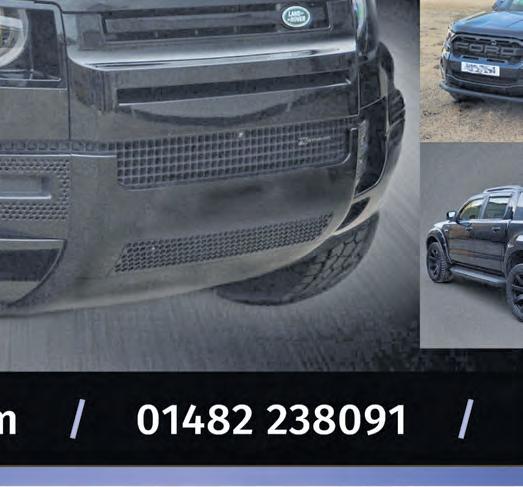






Croytec are dedicated to developing products with style
We give form to our components by machining detail into them with chamfered edges and rounded corners, under cuts, engraving and much more. We take time with care and attention to detail to ensure we deliver quality products. Our products have become a feature to many Land Rovers worldwide.





Alongside our aluminium interior and exterior trim range, our Special Order Service offers leather trim which can be designed to your requirements incorporating our colour anodised parts, to give you the ultimate Enhanced by Croytec Defender.

























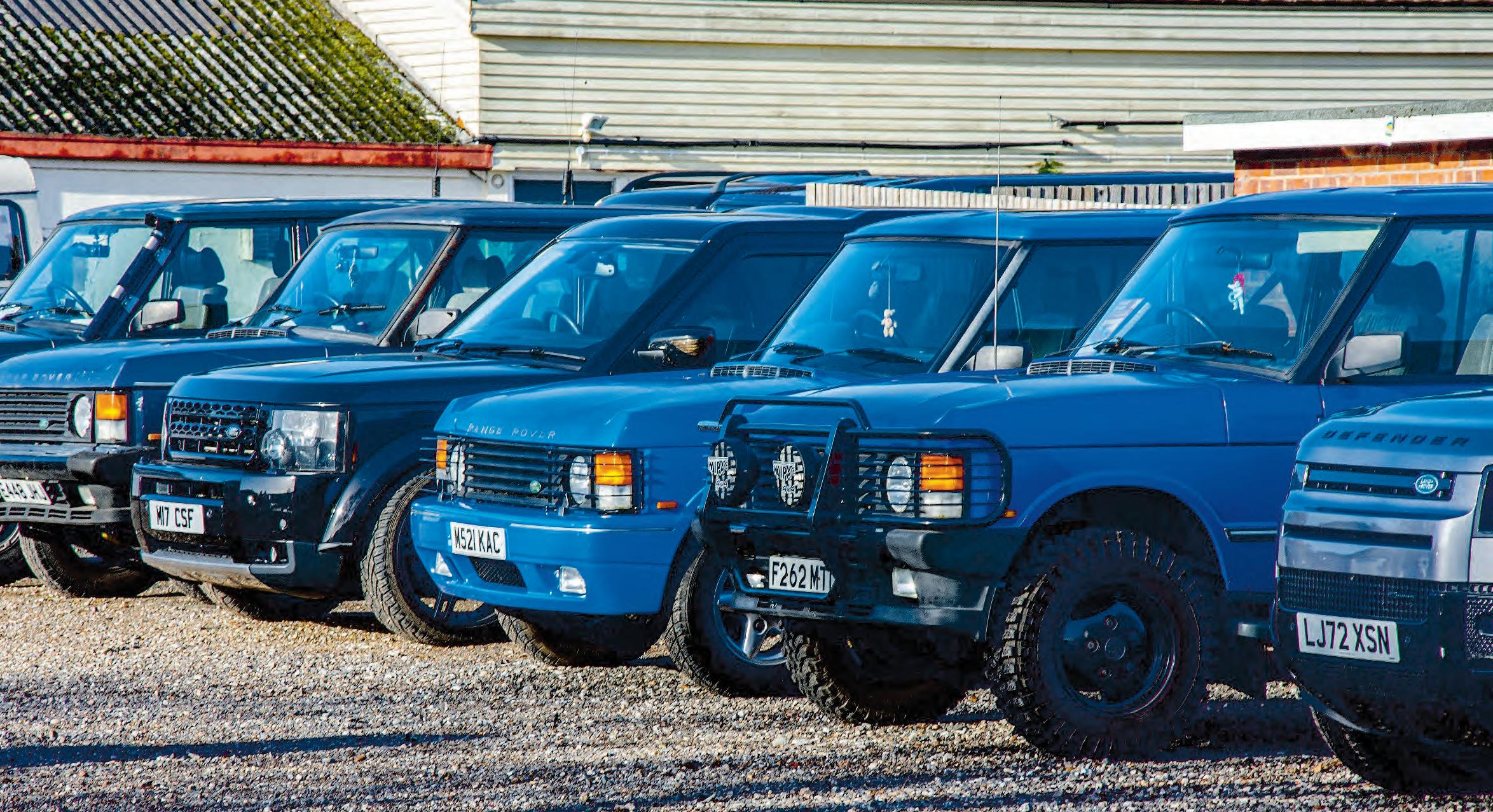














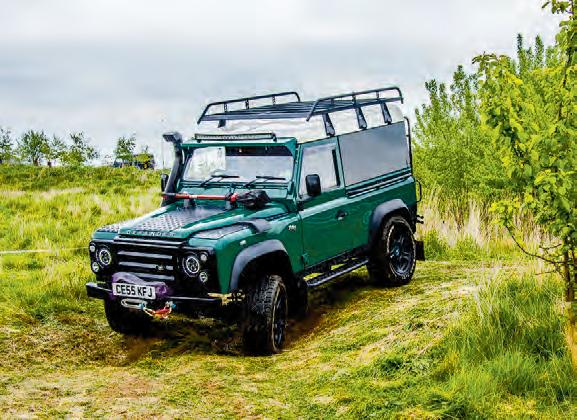





‘The Hindon’ by Heritage 1948 has been developed after customer demand for a 15” Wood Rim Wheel with a Satin Black Anodised Body. 'The Hindon’ joins our ever growing range of exceptional quality wheels.
The Hindon 15” Wood Rim by Heritage 1948 has been developed around the classic spirit of the Land Rover and continues our uncompromising commitment to quality aftermarket parts. The Satin Black Anodised Body of the Steering Wheel is forged from durable 6061 Billet Aluminium. This is contrasted by a crafted Beech Wood Rim and nished o with 9 Polished Structural Metal Rivets. A Steering Wheel guaranteed to improve the interior of any Land Rover Series or Defender.
Heritage Wood Rim Steering Wheel 6061 Billet Aluminium
Beech Wood Rim Black Anodised Body 48 & 36 Spine Boss Kits
Product Code: HER-WH-05
+44 (0) 1948 545132
INFO@HERITAGE1948.CO.UK

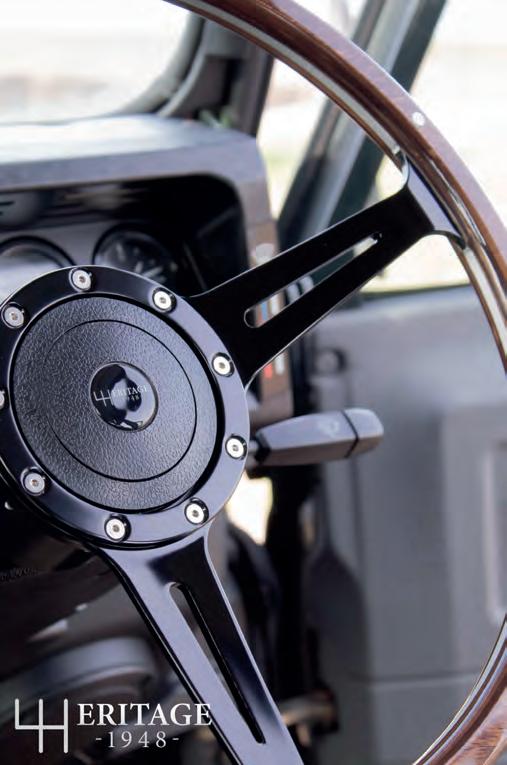
Heritage 1948 is dedicated to producing a range of outstanding quality Canvas Hoods for Series Land Rovers. Unlike some of our competitors, all of our Land Rover Hoods are handmade in our Somerset factory from superior quality ‘Moorland’ Canvas.


Our handmade Hoods are inherently more accurate than machine produced counterparts, allowing for an enhanced t and exceptional quality control. Heritage 1948 has taken great care to ensure all our Land Rover Hoods have an enhanced life span and are all nished with period correct Solid Brass ttings.

To advertise in The Landy, call our team on 01283 553244

We’re on Facebook: www.facebook.com/thelandyuk
After seven decades, Land Rover’s support for the Red Cross and Red Crescent Movement remains as strong as ever – with the Defender firmly in the spotlight

Way back in 1954, a 107”
Series I was converted into a mobile dispensary and sent into the deserts of Dubai to help distribute medicines in remote areas of the Gulf. Equipped with drug cabinets, water containers, washing facilities and a stretcher, as well as a safari roof and flotation mattresses for traction in soft sand, the Land Rover was built by Pitchers of London and supplied by Solihull to the British Red Cross Society.
It was Land Rover’s first collaboration with the Red Cross and Red Crescent Movement. And seventy years later, the relationship remains as strong as ever. To mark the anniversary, Land Rover has donated a specially equipped Defender 130, fitted with advanced satellite communications hard-
ware for disaster relief in hard-to reach areas, to the Red Cross in Italy – where Henry Dunant of Solferino founded the movement 160 years ago.
It’s common for mobile phone networks to crash during environmental disasters such as the calamitous floods and mudslides that can happen in mountainous regions like the Alps, the Apennines and the Dolomites. This is a major obstacle in the path of relief efforts, which depend so much on communication. To address this, the 130 is fitted with a roof-mounted satellite dish – the first mobile application of a technology that’s already in static use with the Italian Red Cross. The Defender’s all-terrain capability means it will be able to site the communications hub wherever it’s


needed – and with a winch and tow hook also installed, it will in addition be an all-round workhorse in areas where disaster response is required.
In addition to this, Land Rover is currently supporting six key international projects around the globe. These focus on threats such as food insecurity, conflict and climate change – all of which mean its partnership with the Red Cross and Red Crescent has never been more valuable:
• UK: Land Rover works alongside British Red Cross teams across Britain, last year donating a specially adapted Defender 130 emergency response vehicle to support communities disrupted by extreme weather in North Wales. On a more basic level, the Red Cross also supports people affected by


















Above: The anniversary 110 was presented to the Italian Red Cross in Solferino, where Henry Dunant founded the movement 160 years ago. It’s equipped to work as a communications hub for disater relief workers in the country’s mountains, where flash floods can have particularly devastating consequences
Below: The Red Cross and Red Crescent, and its Land Rovers, have cropped up everywhere in the world – this case India (main picture) and providing education on sanitation in Tajikistan
emergencies such as house fires and power cuts.
• Nepal: In what is a global hot spot for natural disasters, Defenders operated by the Nepalese Red Cross Society help communities across eight of the most at-risk regions. In two years, more than 15,000 households have been helped.
• Italy: Funding from Land Rover helps to train volunteers, provide essential provisions and arrange vital deployment drills and simulation exercises to enhance search and rescue capabilities.
• Australia: Disaster resilience has become ever more important in parts of New South Wales, where populations are increasingly vulnerable to floods and bushfires. Land Rover supports the work of the Australian Red Cross in
setting up community response teams that play a leading role in emergency management, with more than 4000 individuals having received training thus far. In addition, Defenders are used nationwide to help the Australian Red Cross reach remote communities.
• Switzerland: Since April 2023, Defender has supported the REDOG search and rescue organisation, part of the Swiss Red Cross, which trains teams of search dogs and their handlers for rapid deployment in Switzerland and beyond. Its funding has trained 400 team members, with 23 dog teams deployed in this time.
• Morocco: Defenders have been working in ongoing disaster and emergency relief efforts in the aftermath of the 2023 earthquake – the deadliest to hit Morocco in the last 20 years.
These are some of the latest examples of the Defender’s work with the Red Cross and Red Crescent movement, however it’s been a continuing partnership stretching back to those early days, 35 years before the Defender name was introduced. Following that 107’s successful deployment in Dubai, several more Series Is went into operation in Kenya to support nurses providing medical and welfare services






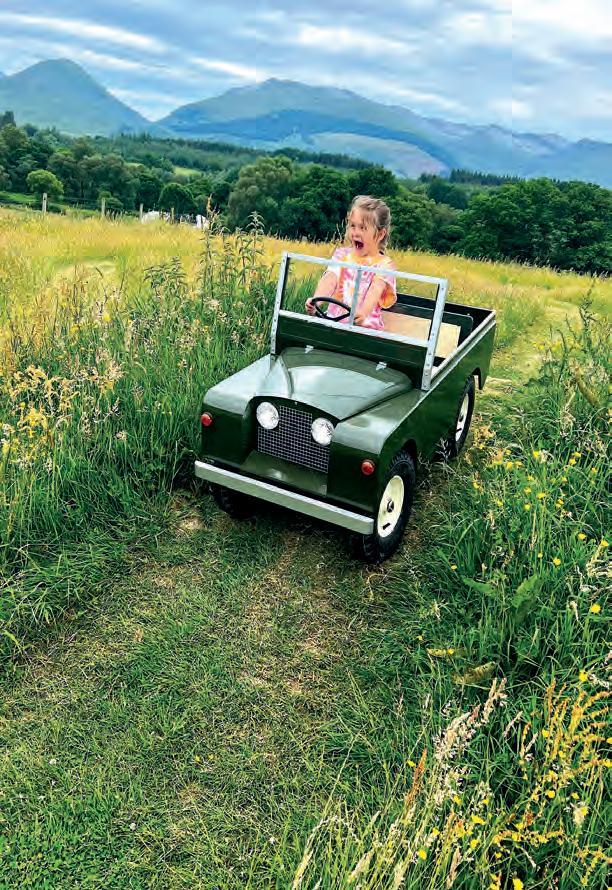







You tend to think of the Red Cross as being a western organisation that provides help for those who need it in far-away lands. Well, Wales can feel quite far away, especially if you take the M4, but this specially converted Defender 130, which was donated last year to help rescue teams reach isolated communities during times of severe weather, demonstrates that charity truly does begin at home. And it doesn’t need to be large-scale events, either: the British Red Cross is just as likely to be seen helping those affected in the wake of power cuts or house fires
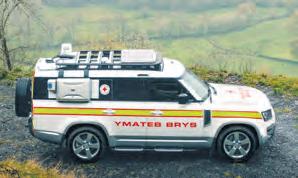
to women and children in the forest villages of the Nyeri district. Series IIAs were sent to Nigeria to support the humanitarian efforts of the International Red Cross and Red Crescent Societies during the Biafran Conflict in 1968, while Series IIIs also distributed aid in the aftermath of the Andhra Pradesh cyclone in India in 1977.
Between 2008 and 2009, Defenders were involved in hurricane response operations in the West Indies, specifically the Turks and Caicos and the Cayman Islands. They also supported sanitation projects in Tajikistan in 2015; this project alone provided education for more than 42,000 adults and 4000 children in basic health and hygiene.
The Defender then played a key role during Covid-19, with a fleet of 27 vehicles deployed by the British Red Cross to deliver food and medicine to vulnerable people across the UK. Globally, a fleet of 267 Defenders supported the Red Cross and Red Crescent Societies at the height of the pandemic.







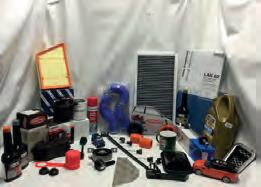








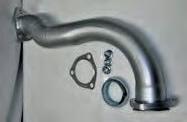








‘The long-standing partnership between Defender and the International Red Cross and Red Crescent Movement shows what can be achieved when working together with a lasting commitment,’ commented Defender boss Mark Cameron. ‘So far, our partnership with the British Red Cross and IFRC has positively impacted more than two million lives around the world.
‘What started in the deserts of Dubai and forest villages of Kenya in 1954 has become part of our DNA. Together, we provide vital assistance for humanity, often when the tarmac runs out and in the harshest of conditions. I hope we will still be helping those most in need for another seven decades.’










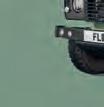






All the information you need – in one place – to buy your perfect Landy
We’ve said it before, and we’ll say it again. The Freelander 1 was an incredibly significant vehicle in Land Rover’s history. Love it or hate it, it has defined everything the company has created ever since.
For this reason alone, a Freelander has the right to be considered a classic. And it won’t be long before the last of the first-generation ones are turning 20, too. But for now, unless we’re talking 1998, an old Freelander is still just an old car. Old or, at a pinch, interestingly retro.
Of course, the post-facelift Freelander was a bloated and ugly thing. And we all know about how unbelievably flaky they were in terms of build and reliability. But there is still something about them that appeals more than the Freelander 2 and certainly the Discovery Sport which came after it.
It’s that retro vibe, the character that lurks in the void between classic and merely old. What experts call the Ford
Series I (1948-1958) £5000-£85,000

The Series I, particularly in its 80” guise, is the most sought-after of
all Land Rovers. Its engineering and design give it real charisma, but parts aren’t readily available. Restoration projects require deep pockets, but see it through and the result will be worth mega bucks.
Gone are the days where you could use a Series I as an actual Land Rover. Because with restored examples changing hands
Series III (1971-1985)

terms, keeping the same 2.25-litre engines throughout the length of its production run. In 1980, the engines switched to a more durable five-bearing crank rather than the old threebearing setup. The transmission also received syncromesh on all forward gears to make it easier to live with.
for millionaire money, preservation is the aim of the game.
The earlier the vehicle, the more it will be worth. The sky’s the limit – but can you really put a price on such an icon?
Pros: Heritage, charm, a true classic, the original Land Rover Cons: Availability of parts, price tag on early 80s
£2500-£30,000
They still carry the simplicity of earlier Land Rovers, but can be obtained for a fraction of the price... for now.
Pros: Most affordable way into Series ownership. Still has the Series pedigree. Parts still widely available
Cons: Not yet as desirable as the earlier Series models
(1968-1984) £3500-£22,000

These military vehicles can easily be distinguished from regular

Land Rovers. To mimic the civvy Series machines, the Series III model built from 1972 onwards, also had its headlights switched out to the wings.
Lightweights add an extra dimension to owning a Land Rover. Their military history and details mean you get a truck with more stories to tell – and that stands
out from the crowd. They’re a rare breed, though – so if you’ve got one, it’s worth keeping hold of.
Pros: Not like all the other Land Rovers out there. Military background. Lovely 2.25 petrol
Cons: Appearance isn’t to everyone’s taste. Exclusivity over regular models means they command a price premium
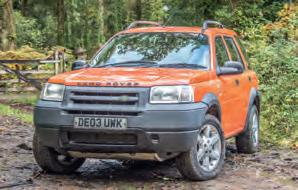
Scorpio Zone. No car stays there forever – but the Freelander is becoming one of the definitive examples right now.
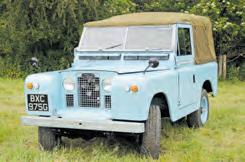



much of that early charm. Prices are on the increase, however, as these vehicles start to come into their own as collector’s items.
A 2.25 petrol 88” would be our pick, as the diesel engines were underpowered and rather noisy.
The Series II/IIA has a wider stance than its predecessor and adds an extra (thin) layer of
rarity – with all the cachet, pride and immense awkwardness that comes with this status.
By ‘rare’, we’re talking about less than 2500 Series IIA FCs in total. And they tended to have a very hard life, so not many have survived to tell the tale.
Forward-Control models differed from everyday Series IIs by
Insure a Freelander 1.8 with Adrian Flux from £332
• Based on a 2003 Kalahari valued at £2500.
Up to 8000 miles per year.
50 year old driver, fully comp, agreed value, £300 excess
£2500-£45,000
refinement. While the engines have excellent longevity, they need to have been maintained properly. Be thorough in your checks, both under the bonnet and underneath the body.
Pros: A sound investment to restore – and enjoy Cons: Bulkheads and chassis rot, springs prone to seizing
having heavy-duty ENV axles, but engine-wise they had the familiar 2.25 petrol and diesel lumps. So, don’t expect performance – but do expect to be given an ‘interesting’ time in the workshop…
Pros: A Land Rover like no other, if that’s what you want Cons: Especially brutal to drive, and to find parts
the time came for demob. They were flogged off at very low prices and turned into off-road toys –not something you’d do with one today, given the rarity and classic value they’ve taken on.
Compared to the IIA/IIB FC, the 101 is more fun thanks to its V8 engine. It’s still a military tool, though – some still have fixtures and fittings from their Army
which adds interest. This is a vehicle for enthusiasts, though, with costs that are sky-high even by Land Rover standards.
of the







The Tdi engine, which arrived with the Defender name, can last for
decades if it’s looked after. Find one that’s had all its oil changes (a tall order) and it’ll go round (and round) the clock.
The good thing about the earlier 200Tdi is that it’s simpler than the later 300. What you gain here you lose in refinement, but this is seen by many experts as the best Defender of them all.
The LT77 gearbox in the 200 Tdi is more truck-like than the later R380, and these vehicles didn’t come with bling. Just be sure it’s an original Tdi you’re getting, not an old Discovery conversion.
Pros: The perfect combination of tradition and modernity
Cons: Lots of horrible and/or deceptive ones around
Defender 300 Tdi (1994-1998) £4500-£43,000
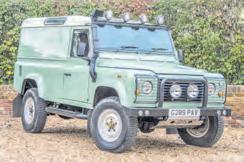
The
the two are related. It’s much more refined and smoother to drive, though there are more electronics involved so later versions in particular are less of a DIY fix.
The arrival of the 300 Tdi also brought with it the R380 gearbox. This used to have a terrible reputation for relability, but most have been put right by now and they’ve

become sought after for their light clutch and better shift action. It was during the Tdi era that Defenders started getting things like alloys, too. You might even find one that’s not been off-road…
Pros: Strength and simplicity.
Perhaps the definitive Defender Cons: Sure to be very different to when it left the factory

When Land Rover introduced the Defender name, it was actually the

and
130 that changed the most. That’s because unlike the old 127, it was built on a proper chassis of its own rather than a stretched 110 frame.
The advent of the Tdi engine was the making of the 130, too. At last, Land Rover could make them pull properly without returning single-figure fuel economy by using a hard-worked V8.
a strong performer. It does lend itself to being tuned though, so watch out for abused ones and knackered examples that have been pushed beyond the limit.
As with all Defenders, you’ll need a rear crossmember sooner or later – or even a new chassis.




As a result, you’ll find many more original(ish) 130s than 127s. Some are even still in service with the utility companies they were built for.
Despite having more electronics than the Tdi, a Td5 Defender can still be a DIY
The last Defenders gained modern 2.4 and 2.2 TDCi engines and
smooth six-speed gearboxes, They still had phenomenal off-road ability and were even okay to sit in. Famously, this was the Defender that actually had a dashboard Many people dislike the TDCi, especially the earlier 2.4, but they still change hands for huge money – especially when the likes of Kahn or Twisted have been
involed. You will always pay a premium for a Puma, and a Tdi or Td5 may turn out to be a better purchase. Even then, though, look after it and you may well never see depreciation.
Pros: Efficiency, creature comforts, off-road prowess
Cons: Price, electronics, TDCi engine is unloved Defender TDCi (2007-2016) £8500-£195,000

to steer it away on to something safer. Like Brexit, for example.
Much as it may infuriate purists, however, the Defender is actually a very wonderful thing. It’s kind of like an old one, only with space, comfort and equipment.
£55,000-£165,000
making modifications – a market Land Rover wants to take back and have for itself. It won’t hold its value long-term the way an original-shaper does, either. But this is still a superb vehicle.
Pros: Comfort, capability, rugged fitness for purpose
Cons: Not cheap to buy. Lacks the old one’s basic charm Defender (2020-on)
If the subject of the new Defender comes up in enthusiast circles, try






The big difference is that you can’t work on it yourself. This goes for maintenance and, crucially,





















It’s also a notable classic in its own way, as it heralded the start of the company’s modern era. It has its issues, though. The viscous coupling is expensive to replace and can be upset simply by running mismatched tyres.
The 1.8 petrol used to be notorious for head gasket failures. Today’s replacements are much
more robust, but a late diesel is your best bet. Even these can go calamitously wrong, though. This was a more complex car than it needed to be, and buying one for sweeties now doesn’t change that.
Pros: Cheap to buy, no big rust issues, surprisingly able off-road Cons: All sorts of things can go wrong, some very expensively
Range Rover Classic (1970-96) £4000-£275,000

The




2 (2006-2015) £2000-£17,500
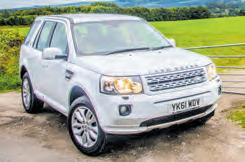
The Freelander 2 was a massive improvement on the model
it replaced. It’s a refined and affordable SUV with a strong engine, good equipment and a decent level of practicality.
It’s become one of the most reliable Land Rovers out there, too.
But do be aware of the rear diff and Haldex unit for costly outlays.
The 2.2-litre diesel engine is a strong performer, though for a
bargain search out one with the unpopular 3.2 petrol unit. Either way, it’s a fine SUV to drive.
Prices have fallen since the production ended, too – £10,000 now gets you one worth having.
Pros: Reliability, refinement, economy of diesel engine
Cons: Transmissions can wear quickly if used for towing
is a classic you can use everyday – and there are people who do just that, preferring to invest new-car money in a restoration than spending it on a current model.
It’s a smart policy, too. An early two-door can cost mega money, but any Classic will appreciate in value if kept in good condition –and sought-after rarities like the CSK and LSE can be a gold mine.
Range Rover (2002-12)
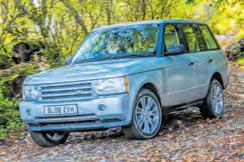
The Mk3 Range Rover hit new heights of luxury and was more re-

The
Range Rover
as
liable than the P38. It’ll still cost a lot to run, however, and drivetrain faults and underbody corrosion are not unknown.
The TDV8 engine is sublime, but you’ll pay more to get one –especially the 4.4, though the 3.6 has all the power you need. The V8 petrol, on the other hand, is temptingly cheap. Guess why…
to greater extremes than ever, with lavish equipment and endless opportunities for personalisation.
It’s a supreme lifestyle wagon for the rich: to many of Land Rover’s traditional fans, on the other hand, it’s the supreme irrelevance.
If you can afford one, few cars could be as pleasing. However if you can afford one and you love
An awful lot of Rangeys have been neglected and/or abused, and you can still buy they cheap. But if you’ve got the skills, and access to parts, restoring one would be the ultimate hobby that pays.
Pros: Most usable classic Land Rover, V8 power, ride quality
Cons: Rust, availability of parts for early models
£2200-£27,000
This isn’t a DIY motor, but it certainly is a Range Rover, with brilliant off-road and towing skills. It relies a lot on electronics, but they work wonders – and the deepdown engineering is very robust.
Pros: Great off-road, luxury, image, TDV8 powerplants
Cons: Very complex. Huge running costs
Land Rovers, you’re likely to be thinking about how many real ones you could buy with this sort of money. It wouldn’t make a bad way to tow your collection about the place, though…
Pros: Immense prestige, and sublime both to be in and drive
Cons: To at least 99% of people it’s utterly divorced from reality
Range Rover Sport (2013-22) £19,500-£140,000

The second-generation Range Rover Sport is 400kg lighter than

When
the original, meaning it’s almost economical to run. It feels really nimble and agile on the road, too, and it comes with a range of engines giving it a brisk turn of pace. Some won’t like the flamboyant posture, while others will love it. Either way, inside the cabin it’s very nearly as luxurious as the full-fat Range Rover.
the masses. Given that it was the company’s fastest-selling vehicle, they clearly hit the brief, even if it wasn’t for the traditional Land Rover owner.
It’s actually still a capable thing off-tarmac – but it’s definitely more at home on the road.
Nevertheless, it is economical by Land Rover standards and
The only stumbling block with such a fine motor is going to be how to pay for it. Depreciation has started to bring down the purchase price – though you’ll never run one on a shoestring.
Pros: Performance, refinement, glorious interior Cons: Marmite image. Pricey to buy and run
because there are so many out there, used prices are tempting. There’s a Convertible model, too, as well as three and five-door

working order is still a sensational car to
own, even today. The problem is that they’re very complex and very, very good at going wrong.
Air suspension failure is the norm. Head gaskets can let go.
Electronics are laughably flaky. And parts can cost the earth – as will the labour bills. Perhaps worst of all, nowadays it’s very hard to find one you can be sure hasn’t
spent at least part of its life being worked on by idiots
Still, you’ll get a classy motor with proper off-road and towing skills. It’s becoming a classic, too, and prices are still tiny considering everything you get.
Pros: Luxury, price, a Land Rover that doesn’t rust Cons: Electrics. Be very afraid
Range Rover (2012-22) £20,000-£150,000


range supply copious amounts of power, and its road manners are absolutely impeccable.
It’s startlingly capable off-road, too, even if getting one muddy would feel like bad form. Most that leave the tarmac probably do so only when their owners are in the mood to blow some grouse out of the sky.
a supreme off-roader as well as being a funky road ride. It doesn’t handle like a sports car, but is agile enough for an SUV.
A Discovery of the same era is far more practical, however, while a full-fat Rangey has more class.
Inside, the Range Rover’s cabin is superb, with sumptuous trim and cutting-edge equipment. Prices are, of course, as immense as the vehicle itself. But if you can afford it, so too is the presence a Rangey will give you.
Pros: Class, luxury, engines, vast all-round capability
Cons: Price
You’re looking at a car which many people associate with rich chavs and criminals, however. And being based on the Discovery 3, it can’t help but share that vehicle’s reputation as a money pit.
Pros: Decent performance and all-round dynamics
Cons: A Disco 3 is more usable. Expect horrific running costs Range Rover Sport (2005-2013) £2500-£20,000
The Sport is mechanically similar to the Discovery 3 – meaning it’s

The Sport is still a massively able tow barge, though, in addition to all its other virtues.
new Range Rover. The Sport is less about being chauffeur driven and more about lording it over other aspirational school runners, but once again it’ll be lovely to drive.
Like the full fat Range Rover (a phrase which has never felt more appropriate), the Sport is available with an old-school V8 engine that gives you racecar performance in

Touch Pro Duo tech and a hike in quality.
The main highlight of the new Evoque is the fact the majority of the range is made up of mild
return for NASA-level emissions. Most UK customers with opt for an altogether healthier plug-in hybrid, but they’ll still get a vehicle that’s brutally fast a well as being able to do the normal Range Rover stuff.
Pros: Smooth, refined, comfy… and game for a laugh, too
Cons: Still hasn’t quite shed its proceeds-of-crime image Range Rover Sport (2022-on) £80,500-£145,000
hybrids, available with diesel and petrol engines combining to an electric motor. Only the base D150 Evoque escapes the electrification,







The Velar a competent cruiser and has received numerous accolades
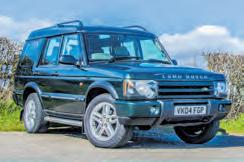
because of its particularly handsome exterior. It’s based upon the same architecture as the Jaguar F-Pace but has greater off-road ability and is available with a wide choice of engines, most of which combine good economy with usable everyday performance.
The interior is Land Rover’s most advanced cabin to date, with
most reliable units ever. It drives well, too – mated to a manual box it has more guts even than the V8 option, which is surprisingly bland but predictably thirsty.
other models expected to follow the Velar in due course.
But is there a whiff of style over substance? Well, it’s a very good SUV. But you don’t half pay a premium for those suave looks...
Pros: Stylish design, chic cabin, excellent tech features
Cons: Feels like an indulgence, especially at such a high price

with the same 100” wheelbase and a slick body containing a spacious, flexible cabin. It was well equipped and refined, and it came with the wonderful Tdi engine.
Over time, the Disco’s epic ability meant almost all of them were hammered at playdays. Lower body rust is a big killer, too. So it’s rare to find a good one now,




and when you do they tend to be priced with a lot of optimism.
Very early ones in tip-top condition are full-on classics, too. For a sound one to own, we’d look for a tidy 300Tdi.
Pros: Price, practicality, parts availability. Epic off-road ability
Cons:
been
models had air-suspension, with all the horrors that brings.
Whereas the Disco 1 was prone to body rust, the D2 is fine here. Instead, its chassis rots like a carrot, especially towards the back end. Also at the back, seven-seat
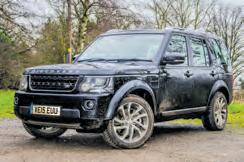
is basically an evolution of the 3. It looks similar and is still a practicality monster, as well as being hugely impressive on and off-road and a hero in front of a trailer, but despite being only subtly tweaked inside feels far more luxurious.
Mainly, D2 owners will tell you about rogue electronics. And leaky sunroofs. They still love their trucks, though, which says a lot.
Pros: Td5 power and reliability, great all-rounder, lots of choice
Cons: Chassis rust, electronics, leaky sunroofs, air suspension Discovery 2 (1998-2004) £1000-£11,000
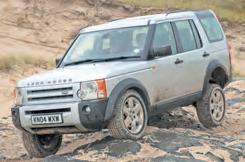
and capable off-road, genuinely luxurious and a giant of a tow truck, and as well as being able to seat seven adults it can be turned into a van with a totally flat rear load area.
But it was also astonishingly complex, and these days it has a reputation as a money pit.
Air suspension and electronic
handbrakes are big sources of woe, cam belts are a body-off job to change and rust is becoming more of an issue. Get a good one, though, and it’s all the car you’ll ever need.
Pros: Good at everything. Lots of accessories available now
Cons: As fragile as you expect, and then some
start off by buying the best you can possibly afford – and at the top of the market, they don’t come cheap. Get it right, though, and this is as good as a modern Land Rover has ever been.
Somewhere between a facelift and a whole new model, the Disco 4
Pros: Most LR fans’ idea of what a Range Rover should be like Cons: Still a potential money pit, and the best are expensive Discovery 4 (2009-2017) £6000-£30,000
That hasn’t prevented it from suffering all the same issues as time has gone on. You need to

body and dishes up an appealing all-round blend of comfort, kit and general driving manners.The third row of seats is only suitable for little ‘uns, though, and off-road it’s a Discovery in name only.
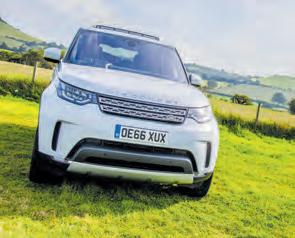
at
launch it was the most capable Land Rover on sale – the new Defender will be going some to wrest that crown from it.
All the engines in the range are refined and flexible, and its chassis is remarkably supple for such a big vehicle. There’s no end of electronics working away in the background, but the effect is very
£24,500-£95,000
convincing – as is an interior that might make you wonder why you’d bother paying more for a Range Rover. Just be careful not to go wild with the options and end up paying more for a Discovery…
Pros: Immense blend of comfort and practicality
Cons: Feels more like a softroader than a proper Discovery
Pros: More practical than an Evoque, and less vulgar. Seven seats. Capable enough off-road Cons: Back seats only for small mammals. Price of top models Discovery Sport (2015-19) £12,500-£33,000
It’s a more practical proposition than the closely related Evoque, and you won’t need to live with the fear of Posh Spice jokes. You


might shudder at the price if you’re buying new, though – but on the used market, there are some tidy looking deals to be had, even on high-spec examples.


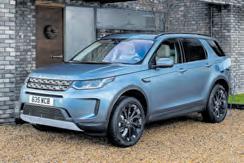


of some models


Series I 88” (1958). Full resto. Solid chassis and bulkhead. 2.5 diesel. Higher diff ratios, taller tyres. Interior heater. Comes with capstan winch, metal sun visor and other parts. £18,950. Corby. 07973 656551 08/24/005

Series I 86” (1955). 200Tdi from 1991 Discovery. Sound condition. Parts thought to be Series I, but gearbox may be Series III. New rad plus some wiring required to finish. Reasonable offers. Anglesey. 07813 298993 08/24/011

Defender 90 Td5 (2004). 14,700 miles. Overland X model by Nene. 185bhp remap, cage, twin 8274s, ARBs, Ashcroft shafts, extreme suspension, split-charge, snorkel. Bluetooth stereo. £19,999. Cheadle. 07792 132288 08/24/002

Defender 90 XS (2013). 29,000 miles. Sawtooths, full LED pack, Black Pack, Winter Pack (inc heated screens), NAS rear step. Alpine stereo, custom seats. FSH. MOT May. £32,000. Rugeley. 07464 605139 08/24/007

Defender 130 Single Cab (2015). 31,500 miles. Converted to camper van by Custom Campers of Germany. Full expedition vehicle ready to travel the world. MOT July. £99,000. Sutton Coldfield. 07425 250590 08/24/008


101 GS (1976). 3.9 EFi. 12v, RHD. Fairey overdrive. Very solid chassis. LPG. Working heater, rear seats, recent exhaust. NATO Hooks. Stainless tank. Many new parts. £17,000. Sheffield. 07718 286323 10/24/005

Series II 88” (1959). 19,000 miles. Galv chassis and bulkhead. 200 Tdi (pro fitted). Recon box, new clutch, Roamerdive. Diesel heater, swingaway wheel carrier, Heystee PAS kit (not fitted). £13,000. Wednesbury. 07722 525120 09/24/007
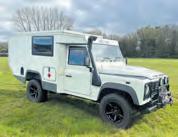

Series IIA (1963). 42,734 miles. 2.25 petrol. Good chassis and bulkhead, rebuilt 5MB engine and carb, new clutch, HT system, fuel tank, props. Parabolics. FWH. Clayton heater. £10,650. Bracknell. 07914 840351 08/24/001

Defender 110 200 Tdi (1993). 195,000 miles. Off-grid camper. Large roof tent, bed in vehicle, diesel heater, fridge, gas hob, LED bar, snorkel, lift. Many new parts. MOT May. £11,995. Braintree. 07751 316516 10/24/004
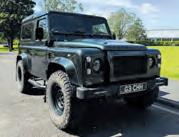

Series III 109 ST (1974). 2.25 petrol. 3-seat cab. Roll bar, winch, towbar. New electric distributor. All lights working except dash illumination. Always starts and drives well. £5500. South Molton. 07983 678373 08/24/006

Defender 90 2.4 TDCi (2010). 84,000 miles. Panoramic glass, Red Booster clutch kit, Ashcroft output shaft, Emu shocks, LED headlights, Eberspacher cabin heater. MOT May. £17,995. Rugby. 07740 404574 08/24/009

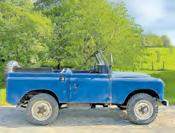
Series IIA 88 (1967). 73,000 miles. 2.25 Diesel. Usable condition, good chassis. Runs and drives. Good steering and tracks straight. Starts every time. Some history and paperwork. £5295. Stonehouse, Glos. 0207 096 5405 08/24/010


Defender 110 2.4 TDCi camper (2007). 124,500 miles. HD susp. LEDs, Grabbers, 13,500lb winch. Double-height pop-top, fridgefreezer, hob, 60-litre water tank, split-charge. £34,995. Billericay. 07715 591541 09/24/001 Defender 90 and custom matching camping trailer (1990). Fully restored. Galv chassis, 4.3 Lexus V8, Ashcroft box, LSD, respray, Exmoor hood. Trailer on Penman chassis. No expense spared. £59,000. Corsham. 07718 536118 09/24/009

Defender 110 Td5 (2001). 148,000 miles. Former AA vehicle, used for promo work when new. New oil cooler. In storage since 2015, needs recommissioning. Long MOT. £10,999. West Bronwich. 07714 743666 09/24/005
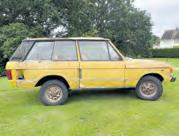
Range Rover Suffix A 2-door (1973). Runs, drives, steers, stops, all gears plus low range work. Good chassis, some body corrosion in usual places. Heritage cert. £12,750. Benfleet. 07774 121717 10/24/006
Defender 90 2.4 TDCi (2010). 76,000 miles. Custom grille, wide arches, side steps. Leather seats, heated wheel, ally trim. Alcantara headlining, soundproofing, upgraded stereo. £32,995. Stoke on Trent. 07376 056720 08/24/004

Defender 110 2.4 TDCi camper (2011). 175,000 miles. Dormobile roof, Speedwing awning, ARB compressor, 125-litre fuel capacity. Engine rebuilt and mapped. Emu shocks. £21,999. Marldon, Devon. 07522 552611 09/24/002

Range Rover 4.0 SE (2000). 52,986 miles. Obviously cherished. Refurbed alloys, new tyres. New Dunlop air springs, headlining, exhaust, brakes etc. Bluetooth, Carplay. MOT Apr. £6750. Coalville. 07377 086489 10/24/002


Defender 90 Td5 Pickup (2005). 67,000 miles. Recent brakes, hubs, bushes, drag link ball joint, prop UJ, brake servo, bump stops. Very tidy interior. Ivor Williams canopy. MOT July. £18,600. Stansted. 07905 225696 09/24/008
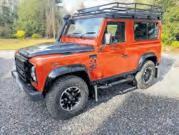

Defender 90 HT (2009). 28,000 miles. Soundproofed, 12v leisure adapter, extra passenger seat. Momo wheel. New Cooper Discoverer ATs on Sawtooths. Recently Waxoyled. FSH. £25,950. Solihull. 07976 440110 09/24/003

Pre-Production Suffix A Range Rover (1970). Requires full resto. Dry stored since 1988. 3rd Range Rover built, was loaned to Royal family. Comes with collection of parts. £45,000. Hebden Bridge. 07760 772263 08/24/003


Discovery V8 auto (1997). Only 27,000 miles. LPG, tow bar, rear step, Kenlowe fan,






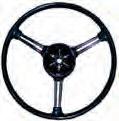



















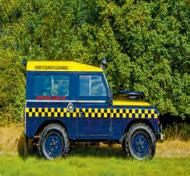


































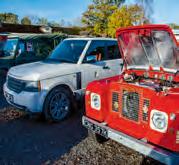











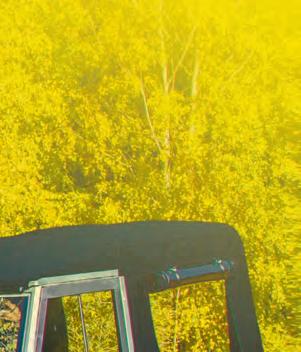



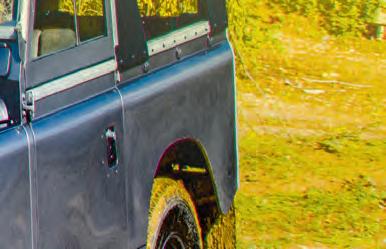









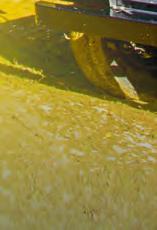










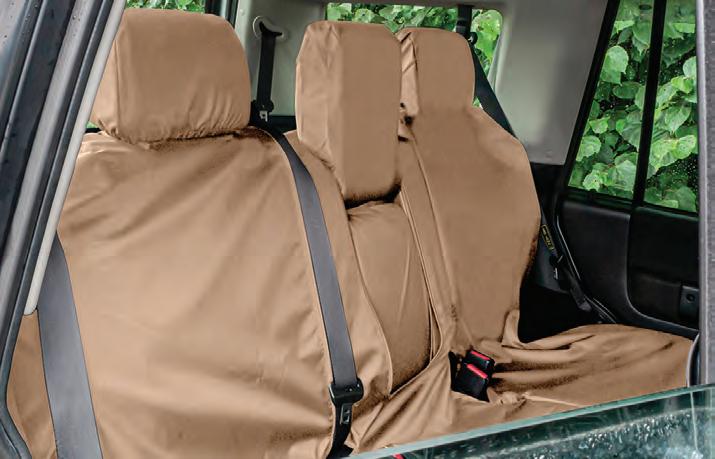
Defender - 2020 onwards Front 3-Door
Defender - 2020 onwards Front 5-Door
Defender - 2020 onwards Rear 5-Door - 60-40
Defender - 2020 onwards Front 3-Door
Defender - 2020 onwards Rear 3-Door - 60-40
Defender - 2020 onwards Rear 3-Door - 40-20-40
Defender - 2020 onwards Front 5-Door
Defender - 2020 onwards Rear 5-Door - 60-40
Defender - 2020 onwards Front 3-Door
Defender - 2020 onwards Rear 3-Door - 60-40
Defender - 2020 onwards Rear 3-Door - 40-20-40
Defender - 2020 onwards Front 5-Door
Defender - 2020 onwards Rear 5-Door - 60-40
Custom-made seat covers designed and manufactured in the UK. These seat protectors are guaranteed waterproof and are perfect for guarding your Land Rover’s seats from not only daily wear, but also from spills, oil, grease, pet fur, and everyday dirt and grime. Attention to detail ensures that these covers fit seamlessly.
They feature elasticated borders around the seat base and come with complete backs. The back also features a slit to enable the rear passengers to use the seat pocket in front of them. To ensure they remain securely in position, they’re equipped with elastic straps and buckle fastenings beneath. Additionally, individual headrest covers are included, allowing for height adjustments.
The covers have expertly sewn seams that are then top-stitched, ensuring durability and a quality finish. Convenient velcro openings at the seat top mean you can install them without the need to remove the headrests.
Constructed from resilient 600 Denier Polyester with a polyurethane coating, the fabric is 100% waterproof. This robust and premium material has a slightly textured surface for added comfort.
